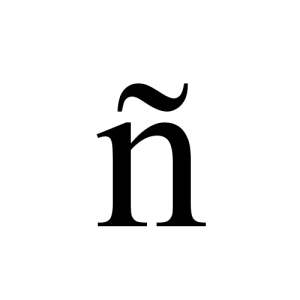Diacritical marks are one of the biggest problems I see in Spanish pieces I am working on. Spanish uses diacritical marks to distinguish meaning and pronunciation, so when they are used incorrectly or not at all, whole sentences can be rendered nonsensical, unclear, or even downright offensive (more on that later). Screwing up one of these marks may seem like a trivial mistake because they’re so small, but in languages such as Spanish that make use of diacritical marks, it’s no different from any other typo.
Even if you don’t speak Spanish, you can help improve the treatment of Spanish writing in the United States with a little knowledge and a few tips. In this post, I’ll discuss the two most common diacritical marks used in Spanish and share some tips for proofreading for them, even with a language barrier.
That Spanish guy has such an acute accent
The most common mark you’ll see is the acute accent mark, a short line over a vowel that climbs up from left to right: á, é, í, ó, ú. This mark is particularly important for indicating verb tense. Mistakes with acute accents come in three forms: leaving them out, putting them on the wrong letter, or using a grave accent mark instead, which slopes down from left to right: à, è, ì, ò, ù. For example, sí, a common word on Spanish versions of forms, means yes, while the unaccented si means if. If you leave the acute accent off of más, which means more, you are left with mas, a more literary way of saying but. If you write màs instead of más, you’ve created a nonexistent word (truly a grave mistake!). Sure, Spanish readers will know you meant to say más, but they’ll also know you didn’t get it right. And if you’re doing a Spanish version of an ad trying to convince viewers they can save more by buying your product, do you think they won’t be distracted by the glaring typo in the ad?
All hail the almighty ñ
The other common mark you’ll see is ñ, which is actually its own letter in Spanish. Pronounced “en-ye,” this little guy has a tilde on top of it. If you’ve been referring to it as a squiggle, start calling it a tilde. Show this badass some respect! Just how important is the tilde? I find a lot of issues in Spanish marketing materials with the word años, which means years. If you print años as anos, you’re saying anus. If you learn one thing from this blog post, it should be this: check your Spanish copy for the word anos. If you’re not talking anatomy, you’re probably looking at a mistake only the tilde can fix. Another big change in meaning? The difference between cono and coño: the former means cone and the latter means see-you-next-Tuesday.
Multilingual proofreading for the monolingual set
First off, make sure you’ve hired a qualified translator! After that, you can also do the following:
- Reserve one pass solely for ensuring no diacritical marks accidentally disappeared or changed from one version of a document to the next.
- Keep an eye out for pesky grave accents. You can search most documents or web pages for the specific letters (à, è, ì, ò, and ù).
- Check for the big offenders: don’t confuse sí and si. If your document has anything to do with lengths of time in years or someone’s age, make sure the word anos hasn’t snuck its way in (singular: ano).
- Learn how to insert these marks! A lot of people copy and paste them, which can introduce different font sizes or typefaces. Instead, head here to see how to enter these marks on a Mac or a PC.
- When it comes to Spanish last names, some people in the United States forgo the traditional diacritical marks in their last names. I frequently see both versions of a name in documents, so if your source’s last name is “García,” don’t misspell it as “Garcia.” If you’re not sure if they accent their name, check their email signature or ask them—they’ll appreciate your attention to detail.
So, diacritical marks are never optional in Spanish?
They aren’t, but some people might try to tell you they are. This is particularly relevant for graphic designers and people working in advertising and publishing: many people believe that if you set Spanish copy in all caps, you should leave out the accent marks. You will see this a lot, but don’t do it! This is a holdover from the typewriter days, right next to the painfully ongoing practice of putting two spaces at the beginning of a sentence (also known as the quickest way to piss off a proofreader). Creating accent marks with a typewriter required a separate keystroke (one that positioned it over the x-line, for you graphic designers out there), and doing this on capital letters just didn’t work. Now that we live in a world with tons of great computer programs and typefaces, this doesn’t need to be a problem anymore. So be a part of the solution and keep diacritical marks on capital letters.
If you need to look up a word or ask a Spanish-related question, visit WordReference.com, an incredible online dictionary and forum with a constantly increasing wealth information on a growing number of languages. ¡Buena suerte!
